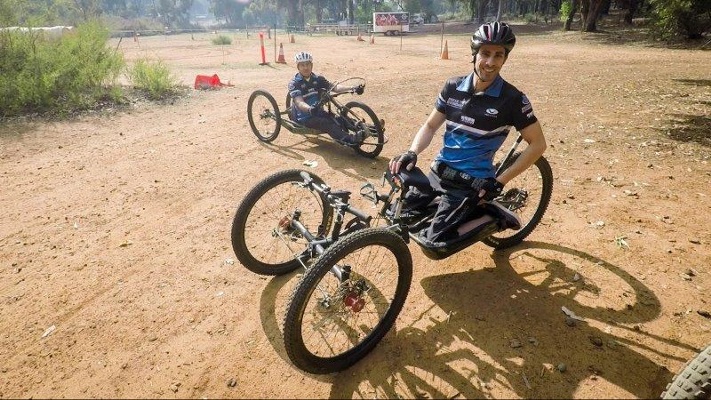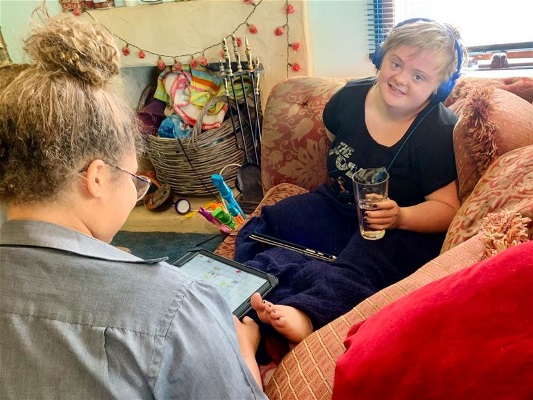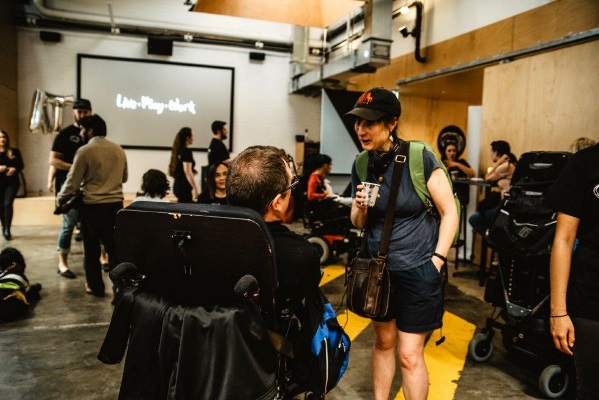Blogs
AT stories and reviews from your peers
Access All Areas
13 March 2020

Automatic doors, no longer only seen in shopping malls and fancy buildings. The technology has dropped in price considerably over the last few years and we’re starting to see them in more and more residential properties, especially where the primary user cannot easily open or close the door. This can be for various reasons. In my case, it’s due to the fact that I’m a wheelchair user and I also have damage to my right shoulder so opening even a sliding door can cause difficulty/pain.
Let’s take a step back for a moment though. Just over a year ago I never would have even thought about having automatic doors in my property. After a very long drawn out process with the Department of Communities who provided the property, we got door openers fitted to our front and rear doors. Now our front and rear doors are glass sliding doors so the theory of just fitting a unit that would allow me to easily open and close my doors should be very straightforward – not so!
The process of getting automatic doors was a juggle between government departments, contractors and for me it was a timely process. As with any other assistive tech, there are so many different options out there too.
Here’s what we’ve learned so far from my experiences and things that anyone else considering getting automatic doors fitted should consider:
- Complete door replacement or fitting an open/close unit to the existing doors
- Access control. We were originally supplied with remote controls for me and partner Martin but what about any support workers/family? How could they gain access if he wasn’t home and I couldn’t get my remote for one reason or another?
- Emergency exit strategy. Our doors operate via remote controls. How do we get out in an emergency if we don’t have easy access to the remote? What about in case of a fire or a power outage?
- On-going maintenance. If you’re funding the doors yourself this is a big consideration. Will you be able to secure funding for this via NDIS or some other means?
Now everyone’s situation is different so there really is no “Cookie Cutter Approach” to finding answers, but this is our first-hand experience:
Door replacement.
Although initially we were advised we would be getting brand new doors, that was cancelled and in its place the department were fitting an opening/closing unit to the existing doors. This wouldn’t normally have been a problem, but prior to this we raised concerns about the quality of the doors as the rollers would keep breaking and the door would then grind against the track.
Fitting day came and everything went well. The units were attached to the door and we were told that they didn’t have the correct locks so we wouldn’t be able to lock the doors remotely. No big deal as we would be locking the doors with the keys anyway. We did get a blank look when we asked about access control and other people gaining access to help me. This was referred back to the project manager who had someone come out and visit us as the Department didn’t know that we were only getting remotes.
Access Control.
After several visits, we got a keypad fitted outside so my support worker(s) and family can gain access without the use of a remote.
As for the keypad opener we were fitted with there’s also the option using an RFID tag so users will not have to remember a keypad pin. You can buy the RFID tags online for just a few dollars each. As extra security we can also easily disable tags without the need of having to change the keycode anytime time a tag is lost/misplaced. If you’re funding doors yourself there’s also WiFi/app-controlled options so you can control your doors via a smartphone or instead of RFID there’s also NFC (Near Field Communications) options. This means that instead of using a tag to open your door you can use your phone by tapping the phone against the keypad.
Emergency Access Strategy.
The locks in our doors are powered, so if there was a power cut the doors would unlock. In theory this should be enough, but the doors are attached to a motor that actually adds additional weight to the door so unless Martin or someone was with me, I would find it very difficult to open the door in the event of an emergency/power cut. I have been told that our door needs to be fitted with a battery backup but as of yet I have no information on this and if this is a legal requirement as it will be very difficult to get the Department to fit a battery backup if they don’t have to. I would highly recommend a unit with a battery backup though if you can get it for that extra piece of mind.
On-Going Maintenance.
Additionally, we’re also having issues with the doors locking us in or the doors just not closing correctly at all. Several contractors came out making “band-aid” repairs and even more specialists out to write independent reports on what should be done and we’re slowly making progress. If you’re funding the doors either through NDIS, CAEP, etc I would highly recommend looking at the current state of the doors and ensure that they are fully functional before fitting a opener. It may be cheaper to replace the doors altogether.
Even with the current issues that we’re having with our doors there is light at the end of the tunnel. When they’re working, they make life so much easier for me in terms of access. The quicker we can get the outstanding issues resolved the better.
I would highly recommend looking at all the different options out there if you’re funding the doors yourself.
Just a simple Google search on automatic doors will provide a whole host of various suppliers and types of doors. Everything from simple DIY Kits to top of the range suppliers like Dorma and KONE so take your time and don’t rush into anything.



